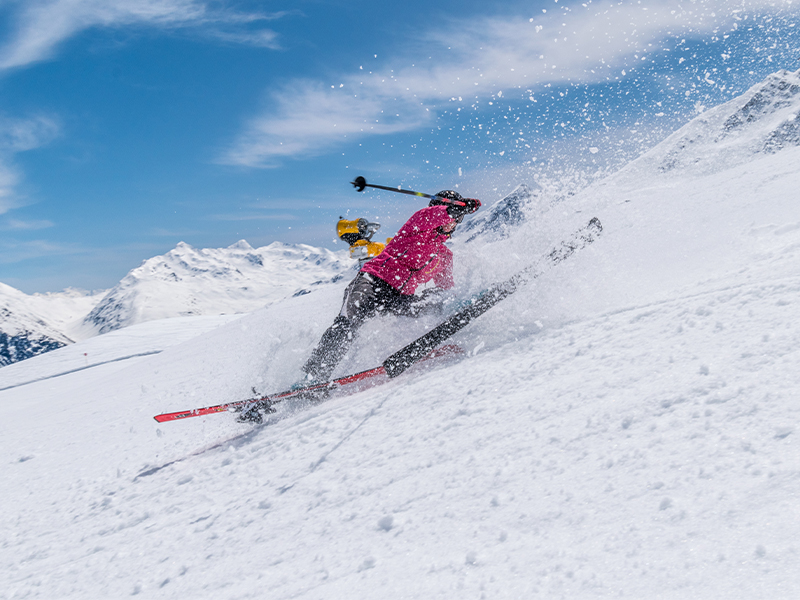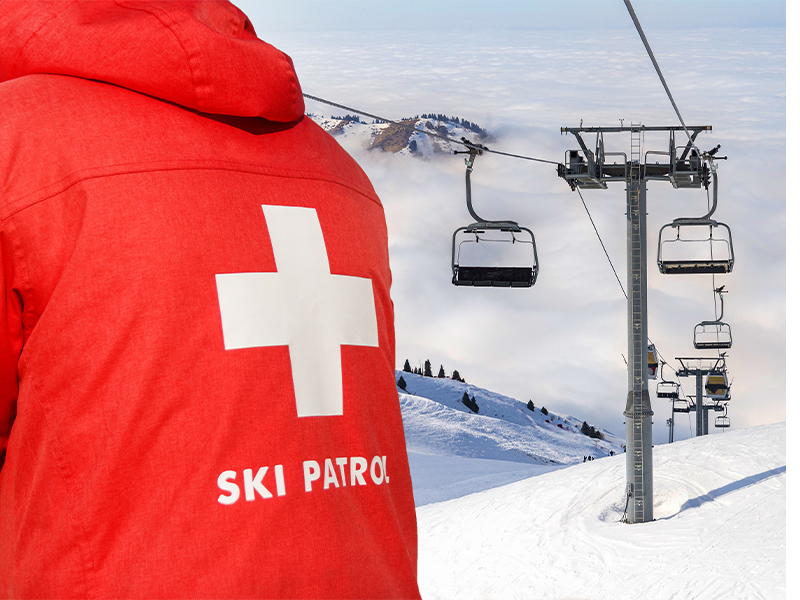Skiing is fast becoming a de rigueur holiday activity for us tropics dwellers. But an injury, especially the all too common ligament injury, is quick way to ruin après-ski vibes. In this second of two articles, orthopaedic surgeon and ski-tragic DR DERRICK OH gives advice on what to do if you get injured snow skiing.
What are the most common snow skiing injuries including ligament injury?
While falls and collisions may cause fractures and abrasions, like they would with any less swanky activity, the commonest ski-specific malady would be a knee injury. Although a fracture sounds bad, it’s usually much worse to suffer a soft tissue injury. A meniscus or ligament tear has less chance to heal completely compared to a fracture and may require surgical intervention.

In the knee, we most often see medial collateral ligament and anterior cruciate ligament sprains or tears. Medial collateral ligament injuries will result in pain on the inner side of your knee. There may even be bruising but rarely any swelling as the medial collateral ligament is outside the joint.
Anterior cruciate ligament tears will usually be caused by twisting injuries, especially if the ski does not disengage from the boot. These injuries are usually associated with early knee swelling (that is, swelling that comes on in less than six hours). There may even be a “pop” sound when it happens. Perversely, the pain settles quickly but instability or a feeling of weakness especially with pivoting actions are characteristic. Resist the urge to try out your knee just because it doesn’t hurt anymore.
Meniscus tears also happen with some frequency. This presents as pain at the joint line – the horizontal gap between your thigh and leg bone. It can happen on either side of the kneecap and usually feels worse with squatting or stair climbing. There may be swelling but usually a few days after the injury. There may even be locking – the knee getting jammed with certain movements, then suddenly feeling normal again.

How do I know if it’s serious?
Any pain that is sharp and well localised should be checked out, especially if it interferes with your regular activities. Mechanical symptoms like locking and instability need further investigation. These may indicate serious injuries. Swelling and the joint feeling warmer than the unaffected side suggest injury and irritation within. It’s a good idea to reduce activity and apply an ice pack. If it persists, get it checked.
Any advice on what to do if you get injured snow skiing?
Ask for help! You don’t have to struggle with the injury alone. If you’re not a good skier (and maybe even more so if you’re an expert), ski with someone. Stay within the ski boundaries. Most mountains will have ski patrols or First-Aid volunteers. Stop somewhere safe and attract their attention. Crossed skis sticking in the snow is a universal sign of distress – use it to get help.
Do I need to report the injury?
Most mountains have simple injury-reporting procedures. The mountain base staff will be able to help. The reporting may not seem useful but your travel insurance may require documentation to process your claim. It will be too late once you’ve left the resort.
It’s not that bad right?
Any injuries with mechanical symptoms or sharp pain and swelling should be assessed. Most of us will be able to cope even with severe injuries just by being stubborn. Knee injuries will cause collateral damage to the other knee or back from excessive limping. It’s better to take it easy and consider getting medical help for the symptoms that do not resolve quickly.
And make sure to check the statute of limitations on your travel insurance for injury reporting and medical attention. It usually expires within weeks of your return home.
My knee has always been a little dodgy; is snow skiing safe for me?
Skiing is tough even on normal knees, especially if you haven’t done anything to prepare. If your knee is already acting up with jogging or tennis, it’s better to get it checked out before your ski adventure.
If you are renting skis, be honest about your weight, height and ability. The rental techs need this information to adjust your ski bindings (DIN). A tighter binding will give you more stability in thick snow and faster conditions, but may not release in a crash, putting your knees at risk of injury. Beginners should get a lower DIN number for easier release in case of falls. The trade-off is looking like a klutz in thick snow. Bindings can also get icy if you ski for long periods. This may prevent a release in a fall – beware!
Skiing is a safe and enjoyable sport (and looks very cool if done well). A little prep work and some common sense could make this the best ski season ever. Just watch out for those pesky snowboarders.
About the doctor
Dr Oh is a consultant orthopaedic surgeon with over 20 years’ experience, sub-specialising in orthopaedic surgery and sports medicine. His areas of interest are in sports reconstruction and cartilage regeneration for the shoulder and knee. He practices mainly at Gleneagles Hospital.

Island Orthopaedics
6474 5488 | WhatsApp 8764 6107
iocgmc02@healthwaymedical.com | iog.com.sg
This article on what to do if you get injured snow skiing first appeared in the December 2024 edition of Expat Living. You can purchase the latest issue or subscribe so you never miss a copy!
To make the most of living in Singapore, read our latest City Guide here for free!
Don't miss out on the latest events, news and
competitions by signing up to our newsletter!
By signing up, you'll receive our weekly newsletter and offers which you can update or unsubscribe to anytime.



